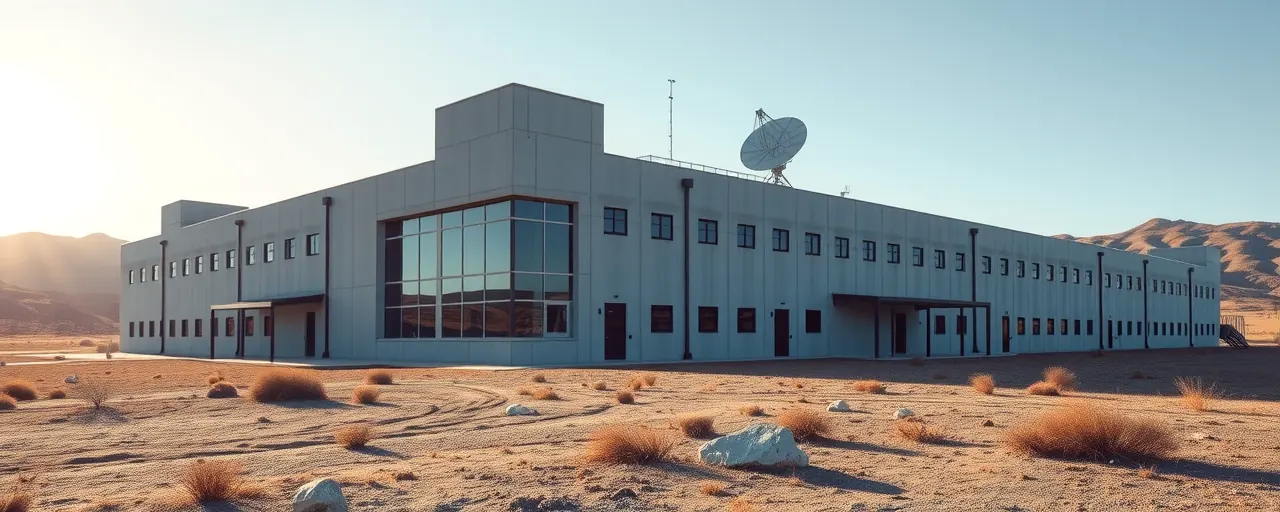A Strategic Stop in the Heartland
In April, North Dakota’s wide-open plains hosted a group of leaders focused on a domain far above. General Mike Guetlein, the U.S. Space Force’s Vice Chief of Space Operations, teamed up with Senator Kevin Cramer and Space Development Agency Director Dr. Derek Tournear for a two-day visit to the Grand Forks area. Their goal was to evaluate operations critical to national security in space while deepening ties with local institutions. The tour, weaving through university labs and military installations, highlighted a key reality: space is now a vital arena for defense and economic opportunity.
The visit kicked off at the University of North Dakota, a powerhouse in aerospace research. Guided through the College of Engineering and Mines and the John D. Odegard School of Aerospace Sciences, the group learned about advancements in space studies and technology. UND’s partnerships with the Air Force and Space Force bring together civilian and military expertise, fostering innovation. Guetlein emphasized that such collaboration is crucial for safeguarding the space environment for decades to come.
Day two turned to operational priorities. At Cavalier Space Force Base, the 10th Space Warning Squadron demonstrated its missile warning and space domain awareness systems. Guetlein and Cramer observed radar technology that tracks orbital objects, distinguishing threats from routine satellites. Briefings outlined plans to upgrade aging systems with new software and hardware, ensuring these capabilities remain cutting-edge.
North Dakota’s Role in Space Defense
North Dakota has long played a quiet but essential role in national defense, and its space mission is expanding. Cavalier’s radar systems, operational since the 1970s, now support Space Delta 4, delivering real-time data to command centers. Grand Forks Air Force Base is home to the Space Development Agency’s growing footprint, including a $18 million Satellite Test and Checkout Center opening in 2026 and $325 million in satellite mission funding. These efforts position the region as a hub for resilient space operations.
Global competition adds urgency. China’s 66 orbital launches in 2024 and Russia’s testing of advanced satellite payloads signal an intensifying race in space. North Dakota’s bases, with their advanced tracking and sensor systems, are critical for monitoring these developments and maintaining U.S. space superiority. The region’s infrastructure enables rapid detection of potential threats, a cornerstone of national security.
Challenges persist, though. Upgrading legacy systems demands substantial funding, and seamless integration of new technology requires precision. Guetlein praised the dedication of the workforce—Guardians, Airmen, and civilians—but stressed the importance of training and recruitment. Partnerships with UND and other institutions are vital for building a skilled pipeline to meet these needs.
Economic and Academic Impacts
The Space Force’s presence in North Dakota delivers more than security—it fuels economic growth. Military bases drive local economies, and Grand Forks benefits significantly. A 2021 Texas study showed bases generating $114 billion in activity, and while North Dakota’s impact is smaller, it’s real. The new satellite center will create up to 240 jobs, supporting industries like construction and healthcare. Infrastructure investments further boost businesses and housing markets.
The University of North Dakota amplifies these benefits. Through the Space Force University Consortium, UND secures funding for research in areas like advanced sensing and cislunar awareness. Students access internships, faculty partner with NASA and DARPA, and prototypes move toward practical use. These efforts not only advance technology but also train students for aerospace careers, strengthening the state’s workforce, as Cramer noted.
Some advocates, however, raise concerns about rising defense budgets. They argue that prioritizing military spending—potentially billions more under certain plans—could limit investments in healthcare or infrastructure. They push for diplomatic efforts and arms-control agreements to balance technological advances, underscoring the need to weigh security against other national priorities.
Building the Future, Step by Step
As Guetlein and Cramer left Grand Forks, their visit crystallized North Dakota’s pivotal role in the Space Force’s mission. The region’s bases and academic partnerships show how collaboration powers progress, from monitoring orbits to educating future leaders. Challenges like modernization and global rivalry loom large, but the groundwork laid here is solid.
The Space Force’s efforts in North Dakota reflect a broader dynamic. Space is a realm of immense potential and complex risks, demanding both innovation and vigilance. The region’s contributions—radar systems, research labs, and skilled workers—are helping the U.S. maintain its edge, but long-term success depends on sustained investment and cooperation.
For North Dakotans, the Space Force’s work is a source of pride and opportunity. It’s a reminder that even in a small corner of the country, local efforts shape the nation’s reach into space. As the U.S. navigates this new frontier, places like Grand Forks are proving their place in the stars.
